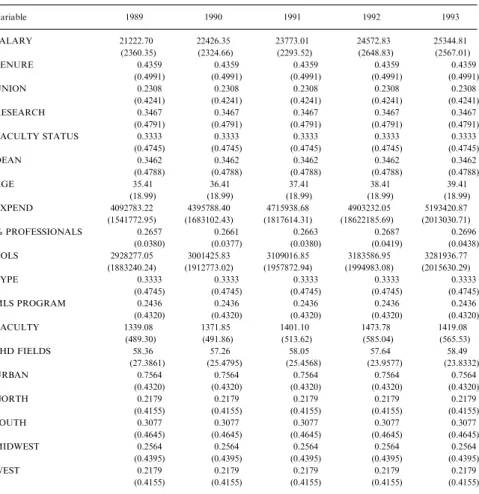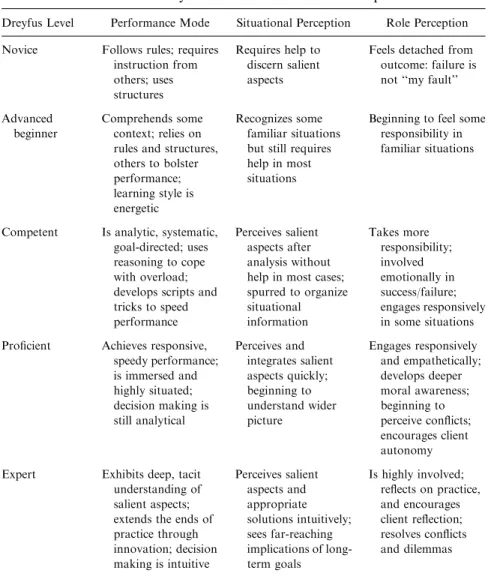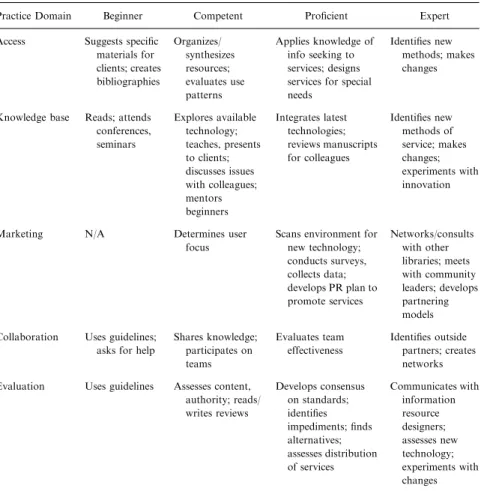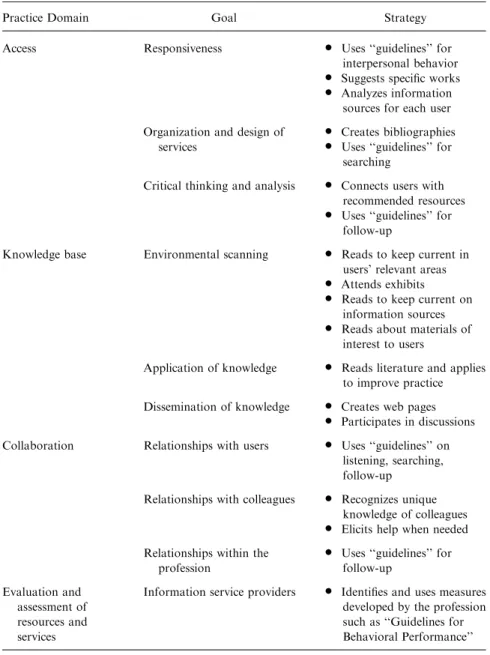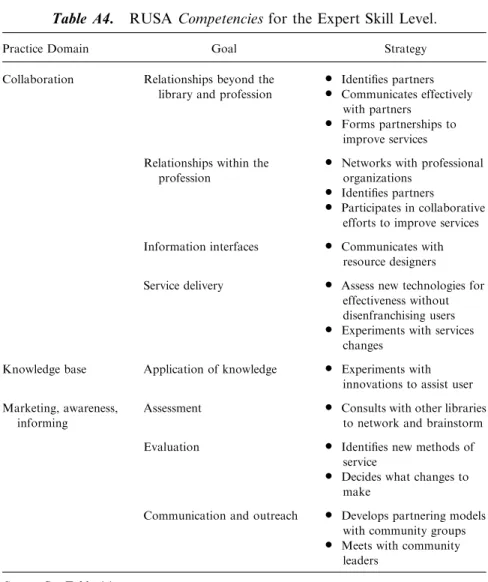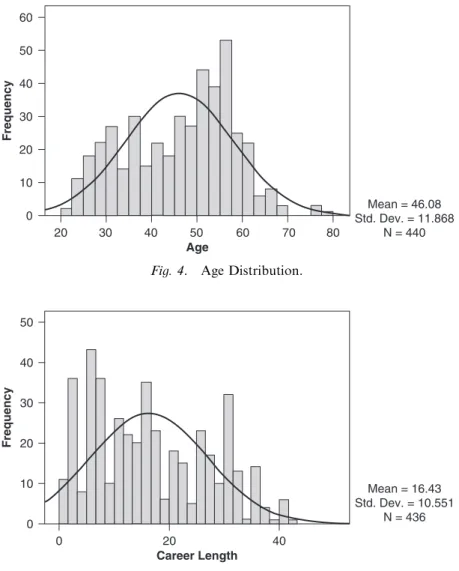The opinions expressed in these chapters are not necessarily those of the editor or publisher. With his contribution to the series, Charles provides an overview of the organizational literature.
INTRODUCTION
Observed skill criteria in the narratives were used to reorganize the mixed skill levels presented in the Reference and User Services Association (RUSA) Professional Competencies for Reference and User Services Librarians. Through interviews with reference librarians at different stages in their careers, I tried to find out if this model could help to clarify the nature and development of expertise in the librarian's world.
THEORETICAL BACKGROUND
It does not allow consideration of how dynamic experience in the social world influences skills and behaviors. The work of Hirschorn (1984, p. 2) and others who examine sociotechnical work environments also helps clarify our understanding of skills development in occupations currently being transformed by information technology: "the post-industrial worker performs developmental tasks." . , operating on the borderline between old technical realities and emerging realities''.
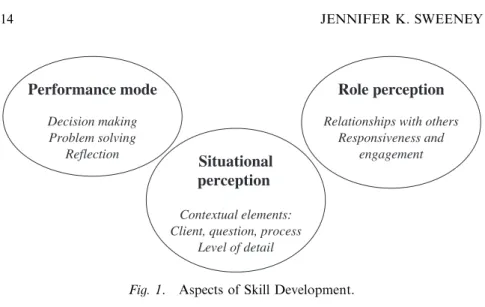
STUDY METHOD
The format of the interviews was semi-structured, meaning that although the basic questions were the same for each participant, prompts were generated based on the topics that were of most interest to the participant. Finally, after discussion of the above topics, a simplified version of the Dreyfus model was introduced, and participants were asked to estimate his or her current skill level.

FINDINGS
I have to write everything down as I ask them the questions so I can formulate it in my head. I need to sit back and think about it for a bit and then this is the approach. The general theme of the expert stories, such as those of the knowledgeable librarians, is how the client and the librarian worked together to reach a mutual solution.
DISCUSSION
I think the role of the librarian has changed quite a lot, and many users today think of using the librarian or looking for the librarian for the management operation rather than the content. While the narratives of some of the librarians in this study had characteristics that placed them squarely at one skill level or another, many more expressed stories that crossed category boundaries in some area.
REORGANIZING THE RUSA COMPETENCIES
The document says it should be used to "identify the underlying behaviors that lead to successful performance." As the librarian gains experience, her skills change as she can perform more of the activities in the Competencies.
CONCLUSION
How can we improve how we organize and manage reference work for individuals at different skill levels. The narratives of this study indicate that this collaboration contributes to closer involvement in client learning and greater perception of problems and influences outside the library.
2000).Non-intrusive evaluation of referral service and individual responsibility: The Canadian experience. 1986). Mind over Machine: The Power of Human Intuition and Expertise in the Computer Age. Massman (Eds.), Options for the 80s: Proceedings of the Second National Conference of the Association of College and Research Libraries (pp. 375–384).
APPENDIX. RUSA COMPETENCIES BY DREYFUS SKILL LEVEL
Information Interfaces Determine if there are alternative resources with better interfaces. Information service providers Develop assessment. Support spirit of the corps to evaluate and improve service behavior Information Services Develop and incorporate.
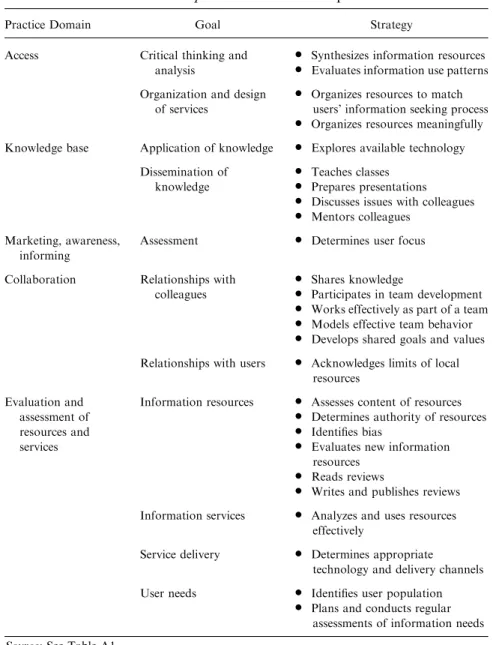
INDIVIDUAL IN PERSPECTIVE
ABSTRACT
Corporate culture has the potential to make an organization more than the sum of its parts. Management may direct and promote corporate culture, but by definition, corporate culture is adopted and maintained by virtually everyone in the organization.
BACKGROUND
In addition, the literature also suggests that the individual is very often overlooked in the shadow of the wider establishment of the organization as an organic whole, since the progress of the latter perspective is the goal of organizational development. The theory of structuring people to achieve organizational goals has been around for a very long time.
ENVIRONMENTAL CHANGE
This is the simplest outline of research and theory in organizational development leading up to the present. Additionally, Thompson (1965) wrote that "The relationship between personal and organizational goals, ideally, would appear to be where individuals perceive the organization as an avenue for professional growth" (p. 11).
PURPOSEFUL CULTURE
And these attitudes figure among the main features of the learning organization, which is the ultimate model of choice in the post-bureaucratic environment. But uniformity cannot be found in the scientific assessment of the relative shift of authority from participation to organization.
THE INDIVIDUAL
Sennett covers many aspects of the post-bureaucratic workplace, too many to cover here. While Sennett and Argyris theorize the effects of management strategies on the organization as a whole, they also address the interests of the individual.
THE LIBRARY CONTEXT
The library exists primarily, and in many cases solely, to stimulate the cognitive processes of the members of the host organization. The implications of this distinction for the management of the library organization are broad and deep, and form the uniqueness of the library. This development creates preconditions under which the role of the individual in the organization is central.
SUMMARY AND CONCLUSIONS
They are decisions that must be made by the individual and the organization in the interest of serving the community and gaining its support. In the final analysis, whether or not a managed culture really represents a perversion of authority depends entirely on the unknowable intentions of the CEO. This review of the organizational development literature traced the shift from bureaucratic systems characterized by the authority of position in the hierarchy to culture-led systems characterized by the guided influence of peers in a much flatter structure.
NOTES
For a particularly informative overview of the thinking on motivation, see the chapter entitled ''A Sociohistorical Analysis of the Literature on Rewards and Intrinsic Motivation'' (Cameron & Pierce, 2002, pp. 177-197). Chris Aryris was early in studying personality and psychological energy in the organization, especially in his chapter on ''Human Personality.'' This is the name of the reported experience at the Hawthorne Plant of the Western Electric Company in Cicero, Illinois, primarily in 1927-1932.
COW’’ CULTURE: THE
RELATIONSHIP OF PROFESSIONAL ADVICE NETWORKS TO
RECEPTIVITY TO INNOVATION IN ACADEMIC LIBRARIANS
Frank Cervone
What are the distinguishing features in the composition of the professional advisory networks of people with a high willingness to innovate? People with the highest receptivity to innovation have large professional advisory networks that are heterogeneous. People with the highest receptivity to innovation do not have large professional advisory networks that are heterogeneous.
REVIEW OF THE LITERATURE
Within the relational tradition of social network analysis, there are two possible approaches to determining the extent of the network itself: limited (full network analysis) and egocentric (personal) network assessment (Scott, 2000). As noted in the demographic analysis of the study population, this lack of diversity was clearly demonstrated. In general, the majority of respondents' professional advice network members are people in the workplace.
Physical proximity to other members within the typical professional advice networks of the respondents is high. A test of the overall Cronbach's alpha score (Appendix E) for the innovation indicators was performed and found to be for standardized items.
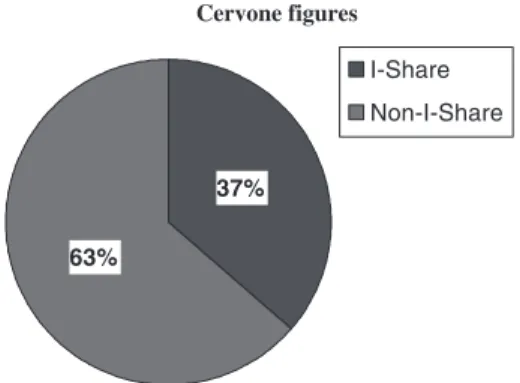
CONCLUSIONS AND RECOMMENDATIONS
Ethical and strategic issues in organizational analysis of social networks. Journal of Applied Behavioral Science. Galaskiewicz (Eds.), Advances in social network analysis: Research in the social and behavioral sciences (pp. 3–25). Introduction: Planned organizational changes and organizational networks. The Journal of Applied Behavioral Science Theory and method in organization studies.
APPENDIX A. QUESTIONS RELATED TO THE COMPOSITION OF INDIVIDUAL SOCIAL NETWORKS
APPENDIX B. ATTITUDINAL DIMENSIONS ASSESSED BY THE RUSAW MULTIFACTOR
ASSESSMENT INSTRUMENT
That is, there should be little difference in social status between managers and employees in the organization. A variety of ideas must be absorbed from all staff to find creative solutions and increase commitment to achieving goals, both individual and organisational. The influx of new ideas by analyzing feedback and soliciting the skills of "outsiders" should be actively encouraged.
APPENDIX C. QUESTIONS ADAPTED FROM THE RUSAW MULTIFACTOR ASSESSMENT
INSTRUMENT
APPENDIX D. SURVEY INSTRUMENT
Black or African American - a person with origins in any of the black racial groups of Africa. Native Hawaiian or Other Pacific Islander - a person with origins in any of the original peoples of Hawaii, Guam, Samoa or other Pacific Islands. White – a person with origins in any of the original peoples of Europe, the Middle East or North Africa.
APPENDIX E. ITEM-TOTAL STATISTICS FOR INNOVATION INDICATORS
COMPENSATING WAGE DIFFERENTIALS AMONG
MEMBERS OF THE ASSOCIATION OF RESEARCH LIBRARIES
TENURE
ACADEMIC LIBRARIANSHIP
Tenure is no less controversial in academic libraries and the use of tenancy within the academic library labor market is not uniformly practiced. Indeed, the exact number of academic libraries that offer tenured positions to its librarians is unknown. The academic labor market within academic libraries thus offers both options: those libraries that support faculty status/tenure positions for librarians and those that do not.
RESEARCH PROBLEM
LITERATURE REVIEW
Although less draconian, Breneman (1997) proposes a new investigation into the use of tenure in higher education. Take, for example, Biggs' (1981) discussion of the struggle for faculty status and tenure for the academic librarians in the SUNY New York system. One interesting aspect of the library science literature concerns the relationship between faculty status (and tenure) and compensation.
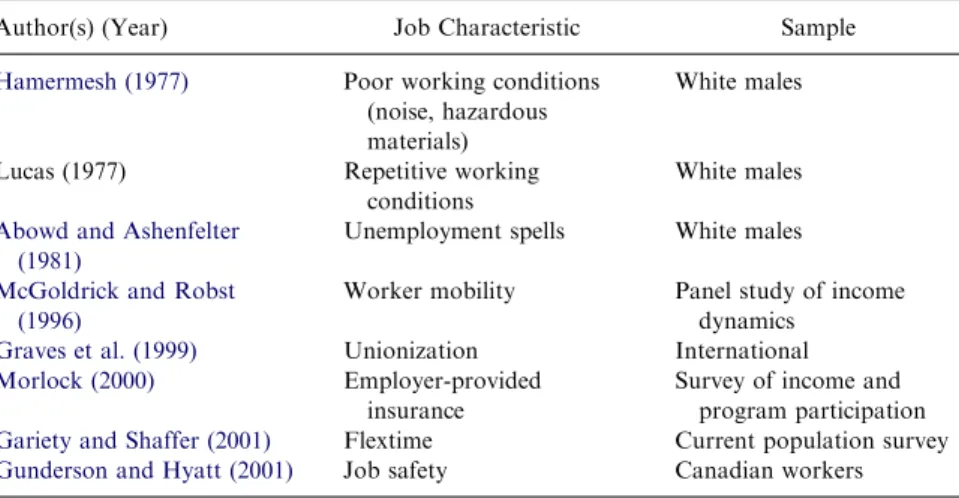
DATA AND METHODOLOGY
A survey was sent to the dean or library director by e-mail in the fall of 2001. A list of the 78 institutions included in the study, according to their geographic location, is shown in Table 3. In their stead, proxies measuring aspects of the library and the university are used.
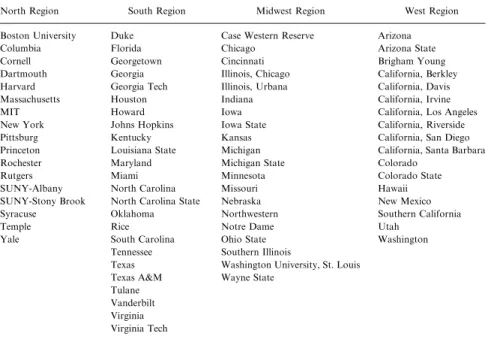
DETERMINANTS OF TENURE IN ACADEMIC LIBRARIES: A PROBIT ANALYSIS
Larger, more organizationally complex academic libraries are hypothesized to be positively associated with tenure use. It is hypothesized that FACULTY size will be positively related to the probability of tenure track librarians. No a priori assumptions were made regarding the relationship of this variable with the probability of tenure.
DETERMINANTS OF TENURE IN ACADEMIC LIBRARIES: A REGRESSION ANALYSIS
The universities included in the study were divided into four categories based on Census Bureau geographic divisions: NORTH, SOUTH, MIDWEST and WEST. VOLS is an aggregate measure of the total number of physical volumes in a library, excluding electronic resources. The universities included in the study were divided into four regional categories based on the Census Bureau's geographic divisions: NORTH, SOUTH, MIDWEST and WEST.
EMPIRICAL RESULTS
As expected, the MLS PROGRAM is positive every 10 years and statistically significant for 9 out of 10 years. Aside from TYPE, few institution-specific variables were found to be statistically significant in the study. PHD FIELDS was supposed to be positive, but was negative for 4 out of 10 years.
